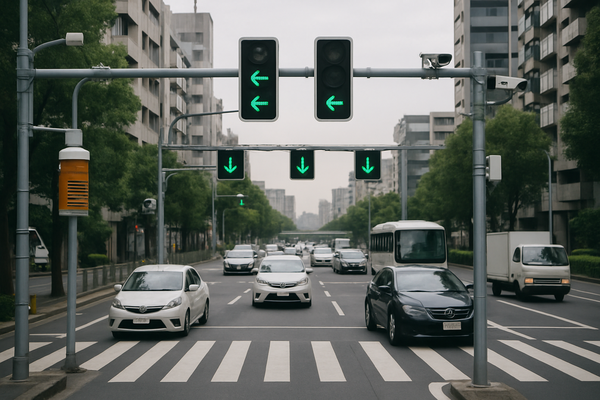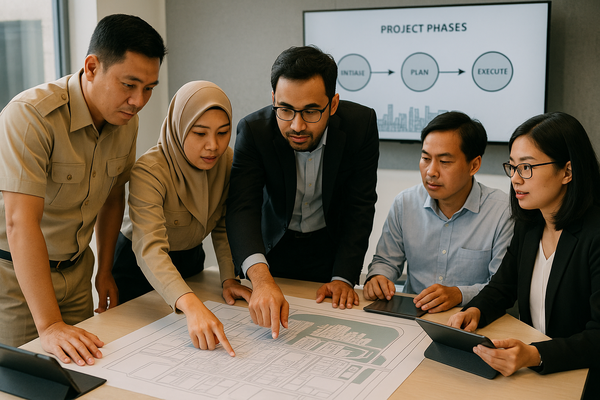

How Aries Star Marketing OPC helped a major Asian metropolis implement IoT solutions and digital services to enhance urban living
A rapidly growing Southeast Asian metropolis with over 12 million residents was facing significant urban challenges including traffic congestion, inefficient public services, and environmental concerns. The city's leadership recognized the need for digital transformation to improve quality of life and operational efficiency, but faced several obstacles:

Fragmented Systems: Multiple government departments operated in silos with incompatible legacy systems and databases.
Infrastructure Limitations: Existing infrastructure lacked the connectivity and sensors needed for smart city applications.
Data Management: No centralized platform for collecting, analyzing, and utilizing urban data for decision-making.
Digital Divide: Varying levels of digital literacy among citizens and government employees.
Budget Constraints: Limited resources requiring phased implementation with demonstrable ROI.
Aries Star Marketing OPC developed a comprehensive smart city strategy and implementation plan tailored to the city's specific needs and constraints. Our approach focused on creating sustainable, scalable solutions that would deliver immediate benefits while building a foundation for future innovation.
We designed and implemented a centralized IoT platform that serves as the backbone of the city's digital transformation. This cloud-based system integrates data from various sources and provides actionable insights to city officials and citizens.
Unified Data Hub: Centralized repository collecting data from IoT sensors, government systems, and citizen feedback.
Real-time Analytics: AI-powered analytics engine for predictive modeling and resource optimization.
Open APIs: Standardized interfaces allowing third-party developers to create additional services.


We deployed an AI-driven traffic management system to reduce congestion and improve mobility throughout the city.
Adaptive Traffic Signals: Smart traffic lights that adjust timing based on real-time traffic conditions.
Congestion Prediction: Machine learning algorithms that forecast traffic patterns and suggest preventive measures.
Public Transport Optimization: Real-time tracking and scheduling adjustments for buses and trains.
We created a mobile application and web portal to facilitate two-way communication between citizens and government, enhancing transparency and participation.
Service Requests: Digital system for reporting issues and tracking resolution status.
Public Consultation: Tools for gathering citizen input on urban planning and policy decisions.
Digital Services: Online access to government services, reducing paperwork and in-person visits.


We implemented a network of sensors to monitor air quality, noise levels, and other environmental factors across the city.
Air Quality Monitoring: Real-time tracking of pollutants with public alerts during hazardous conditions.
Smart Waste Management: IoT-enabled bins and optimized collection routes.
Flood Detection: Early warning system for potential flooding based on rainfall and water level sensors.
Our team worked closely with city officials and stakeholders to ensure successful deployment and adoption of the smart city solutions.
We implemented a strategic, phased approach to minimize disruption and allow for iterative improvements:
Phase 1: Core infrastructure and pilot projects in selected districts.
Phase 2: City-wide expansion of successful initiatives and integration of additional services.
Phase 3: Advanced analytics, predictive capabilities, and autonomous systems.


We provided comprehensive training and support to ensure long-term sustainability:
Technical Training: Hands-on training for IT staff on system maintenance and management.
User Workshops: Sessions for government employees on utilizing the new tools effectively.
Digital Literacy Programs: Community outreach to help citizens access and benefit from digital services.
The smart city transformation delivered significant improvements across multiple dimensions of urban life and governance.
in average commute times through intelligent traffic management
in carbon emissions from optimized transportation and energy usage
response times for emergency services through improved coordination
citizens actively using the mobile app for government services
annual savings in operational costs through efficiency improvements
in citizen satisfaction with government services
Throughout this project, we identified several critical factors for successful smart city implementation:
Stakeholder Engagement: Early and continuous involvement of all stakeholders, from government departments to community groups, is essential for adoption and success.
Scalable Architecture: Building flexible, modular systems allows for incremental expansion and adaptation to evolving needs and technologies.
Data Governance: Clear policies on data collection, privacy, security, and sharing are fundamental to building trust and ensuring compliance.
Focus on Outcomes: Prioritizing initiatives based on their potential impact on citizen quality of life rather than technological novelty.
Public-Private Partnerships: Leveraging private sector expertise and resources can accelerate implementation and innovation.
Continuous Improvement: Establishing mechanisms for ongoing feedback and refinement ensures solutions remain relevant and effective.
Discover how Aries Star Marketing OPC can help you leverage digital technologies to improve efficiency, sustainability, and quality of life. Our team of experts specializes in creating tailored solutions for complex challenges.
Schedule a Consultation Explore Our Services